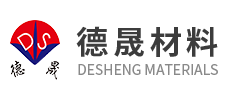Absorption wavelength of a new type of Trinder's reagent chromogen substrate
Release time:
2023-03-27
As a new type of reagent, the new Trinder's reagent contains many types of products. The more common and widely used chromogen substrates are TOOS, MAOS, ADPS, etc., which are suitable for enzyme colorimetric detection, such as blood glucose, blood lipid or uric acid detection kits commonly used in clinical practice, which are helpful for medical staff to judge and treat diseases.
Of course, it can not be judged by adding it to the kit. Sometimes its absorption wavelength and sensitivity are important factors that affect the detection results. Next, we will focus on introducing its absorption wavelength, and you can also better identify and judge it during use.
1、 Chromatogen substrate and visible light spectrum
There are many types of chromogenic substrates, and the absorption wavelength of different products is also different. Generally, the wavelength of visible light is 380-780nm from purple to red. The absorption wavelength of products of TOOS, TOPS, ADPS and ADOS is 540-550nm, belonging to blue-green light; The absorption wavelength of DAOS and HDAOS is about 590nm, belonging to yellow light, while the absorption wavelength of MAOS and MADB reagent products reaches 630nm, belonging to orange red light.
(TOOS chromogenic substrate)
2、 Absorption wavelength and reagent solution color
It is worth noting that the detection color wavelength here is the absorption wavelength of the substrate or the product after reaction, which is not the same as the color of the reagent or solution, but a complementary relationship. Just as the absorption wavelength of ADOS product is 542nm in the green light band, the color of its solution is purplish red, the absorption wavelength of MAOS product reaches 630nm in the orange band, and its solution is green-blue.
3、 Effect of absorption wavelength of chromogen substrate
In biochemical detection, whether the reagent used for detection or the various components in the sample will have a specific absorption wavelength. If the absorption wavelength of the chromogen substrate is close to it, the detection data may have errors. However, the chromogen substrate produced by Desheng avoids such problems. For example, the absorption wavelength of MAOS reaches 630nm, which not only staggers the absorption wavelength of most substances, but also avoids the interference of impurities in complex samples.
At present, chromogen substrates are widely used, especially in diagnostic kits. If the absorption wavelength does not meet the requirements, it is easy to affect the test results, and it is also easy to lead to inaccurate judgment of medical staff. Desheng, as a professional manufacturer of chromogen substrate, has more than 10 years of research and development experience, and has trained its own research and development team. The chromogen substrate products sold have high color sensitivity, pure appearance, no impurities, and high water solubility. The absorption wavelength is basically between 540-630, which can stabilize the experimental results. If you are interested, please click the website!
Contact details
Contact number
Address: C8, Guanggu United Science and Technology City, Ezhou City, Hubei Province
Fax:0711-3704 589
Follow us



